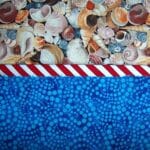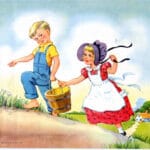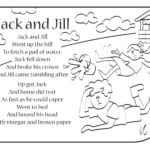More than a mere tongue twister, “She sells seashells by the seashore” holds a captivating backstory, intertwined with the life of a remarkable woman named Mary Anning. From the Dorset coast to global fame, her tale unveils how fossil discoveries and seashell sales in 19th-century England inspired a timeless rhyme.
The Lyme Regis Legacy: Mary Anning’s Story
Born in Lyme Regis, Dorset, England on May 21, 1799, Mary Anning wasn’t your typical young lady of the era. Forget needlepoint; she preferred poking around the rugged cliffs and beaches near her home, unearthing the secrets held within. Her father, a cabinetmaker, supplemented the family income by selling fossils and seashells he found along the coast, a practice young Mary quickly adopted – and ultimately mastered. This wasn’t just a hobby; for the Annings, it was a way of life. You can complete the sky zone waiver form online before your visit to save time at the park. You might even be inspired to go fossil hunting yourself!
Lyme Regis, situated on England’s Jurassic Coast, wasn’t just any old coastline. It was—and still is—a prehistoric treasure trove, a place where the sands whisper tales of ancient giants. Imagine strolling along the beach and stumbling upon the skeleton of a creature that hadn’t walked the Earth for millions of years. That was Mary Anning’s reality.
From Seashells to Sensational Finds: Anning’s Discoveries
As a young girl, Mary, often accompanied by her brother Joseph, scoured the beaches for fossils and shells, selling their finds to tourists to help support their family. These weren’t just pretty seashells; Mary was unearthing the bones of extinct behemoths—ichthyosaurs, plesiosaurs, and pterosaurs—creatures that, before her discoveries, existed only in myths and legends. One can only imagine the thrill of uncovering a nearly complete ichthyosaur skeleton, a marine reptile resembling a dolphin crossed with a crocodile, at the tender age of twelve! This discovery caused a ripple of excitement within the scientific community, catapulting young Mary into the spotlight. Here was a woman, with no formal education, making discoveries that were altering our understanding of the planet’s prehistoric past. She later unearthed a complete plesiosaur skeleton and a pterosaur, further solidifying her reputation as a skilled fossil hunter. Access Smartwork5 to get your work done remotely, perhaps even to research more about Mary Anning and her amazing finds.
A Woman in a Man’s World: Anning’s Challenges
Life as a female fossil hunter in the 1800s presented formidable challenges. The scientific establishment was, let’s just say, a rather exclusive boys’ club. Mary was barred from joining the Geological Society of London, and often, the credit for her groundbreaking discoveries went to male scientists. Talk about a raw deal! Yet, Mary persevered, driven by an unquenchable curiosity and a passion for uncovering the secrets of the past.
The Birth of a Rhyme: From Mary Anning to “Sally”
So, how did Mary Anning become the “Sally” (or “She”) of the famous tongue twister? The details are a bit hazy, like a fossil half-buried in the sand. The tongue twister likely emerged years after Mary’s death in 1847, perhaps evolving from local lore and children’s rhymes about the seaside fossil seller. While the exact connection remains a subject of ongoing scholarly debate, with some suggesting the link may be coincidental, the “Sally” of the tongue twister serves as a charming, if slightly imprecise, tribute to Mary Anning’s substantial contributions to paleontology. The song “She Sells Seashells,” with lyrics by Terry Sullivan and music by Harry Gifford, written in 1908, likely helped solidify the connection in the public imagination, further popularized by vaudeville entertainer Wilkie Bard. It’s possible that “Sally” simply flowed better than “She” or “Mary,” particularly for children. This illustrates how language can evolve and adapt over time.
The Enduring Legacy of “She Sells Seashells”
“She sells seashells by the seashore” is more than a mere tongue twister; it’s a whisper of a forgotten world, a tribute to a pioneering woman, and a testament to the power of words. It’s also a fantastic tool for improving elocution and a playful exercise in alliteration. It reminds us that extraordinary discoveries can be found in the most ordinary places. Every time we utter this seemingly simple phrase, we unknowingly connect with the life and legacy of Mary Anning, a woman who defied expectations and forever changed our understanding of prehistoric life. And that, in itself, is quite remarkable.














